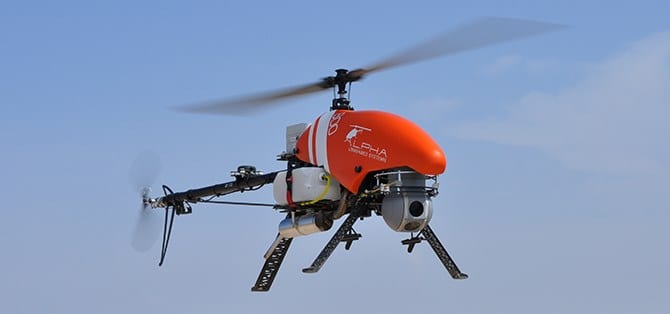Alpha Unmanned Systems has announced that, in conjunction with autopilot developer UAV Navigation, it has developed a fully automatic autorotation feature for its Alpha 800 UAV (unmanned aerial vehicle) platform.
Autorotation, a critical capability for helicopters in case of engine or tail rotor failure, is a state of flight in which the main rotor system turns by the action of air moving up through the rotor, as with an autogyro, rather than by engine power driving the rotor.
Autorotation is difficult for manned helicopter pilots to achieve, and in the case of a UAV helicopter, automatic autorotation has been previously unachievable.
The new capability represents an important step forward in that it enables a UAV in distress to be safely landed, minimizing risk to people and property on the ground. It also greatly increases the likelihood that the payload and other expensive components on the platform will be recovered.
Alpha Unmanned Systems and UAV Navigation have been collaborating on this technology for several years. The robust Alpha 800 was fitted with sensors and hardware to feed the necessary information to UAV Navigation’s VECTOR autopilot. The Alpha 800 platform has proven to be very effective for developing software as well as for extensive simulation with an advanced Hardware In the Loop simulator. Actual flight-testing confirmed the results with repeated successful landings following autorotations from a variety of altitudes, wind directions and headings. In all cases, no engine power whatsoever was supplied to the rotors.
Autorotation is just one of the safety features provided by the VECTOR autopilot to the ALPA 800 UAV. The system is also capable of flying in GPS-denied environments and in situations where the onboard magnetometer is unavailable.
Watch a video showcasing the new autorotation feature below:
The post Fully Automatic Autorotation Introduced for Alpha 800 UAV appeared first on Unmanned Systems Technology.
